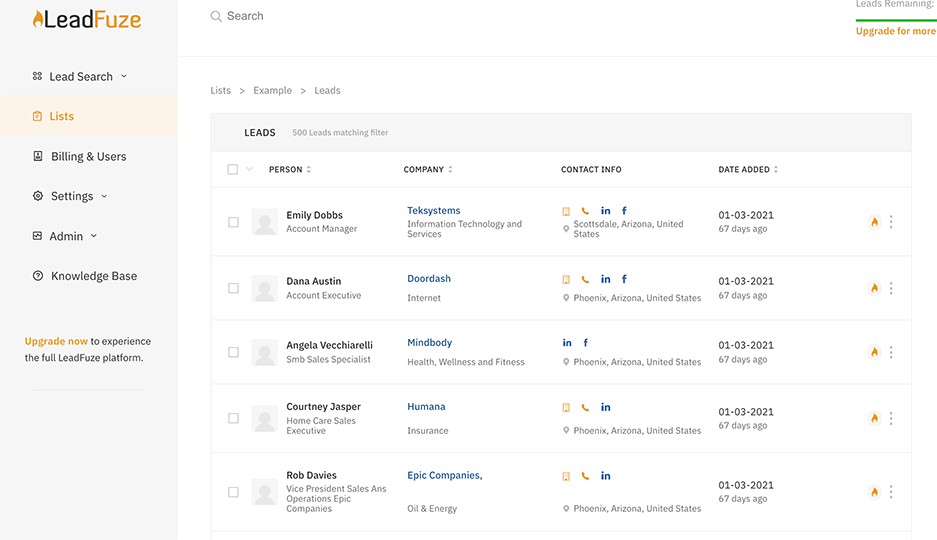As an SDR, I know that making calls can be tough. You never know what you’re going to get when you dial a lead. This blog post gives you some tips on how to have great and effective SDR calls! Read on, and you’ll be a pro in your calls!
SDR Calls: Everything You Need To Know
Imagine calling someone you have never spoken with before. You don’t even know their name or can’t Google them. You must get in touch with them about the service you are selling. You will need to use their tone of voice and your wits to guide you in this situation.
Cold Calling is the new email and social media!
Although it may seem like a distant memory, the first email campaign was sent in 1996. The proliferation of sales technology has changed the way business is conducted.
Sales teams used to have a clear structure and processes. Marketing used to organize events. Inside Sales made phone calls, and Field sales went on meetings.
In the early 2000s, new technologies like Hubspot and Salesforce allowed sales professionals to work in new ways. With social media, the number of channels available to engage with prospects has increased exponentially.
The customer also experienced a change. They no longer had to wait for a call to find out what was happening. They could do their research online and contact anyone they wanted, whenever they wanted. This rapidly changing world requires companies to be able to navigate it.
What is the goal of an SDR?
An SDR’s main goal is to book face-to-face or online meetings for a sales team. The process of booking those meetings varies from company to company, and sometimes even within the same company.
SDR teams often work with both inbound and outside leads.
Inbound
These are warm leads, ideal. This means that the person has heard about the company the SDR works at and has either engaged in content online or asked for more information.
Inbound leads require speed to lead. These leads often require immediate Outreach to get a meeting. An SDR will ask questions to ensure their solution meets the prospect’s needs when they get an inbound lead. If the prospect is interested in the solution, the SDR will schedule an appointment to meet with them.
Outbound
These are cold leads. This means you are reaching out to a prospect who has not heard of your company. You must show value by demonstrating why the prospect should continue talking with you when reaching out to outbound leads.
Outbound prospecting is not without its challenges. For example, it’s rare for the person you want (the decision-maker/influencer) to pick up the phone. This is when you need to reach the person answering the company’s phone. We call this a gatekeeper.
To excel in this type of Outreach, the SDR must have a thick skin and a positive outlook.
How to Have an Outstanding Call
Let’s begin by collecting as much information about a prospect as possible. At Outreach, this means understanding the industry the prospect is in, their company size, and their role or title.
Once they’ve established those basic parameters for a prospect, the SDR then determines what email client the prospect is using (either Gmail or our outreach tool) and whether or not they also use salesforce.
The next step for Outreach SDRs is to establish how many salespeople work within the target organization and identify which of them are sales leaders. This is important because Outreach only sells to sales leaders, such as directors or vice presidents. They do not sell to individual reps who merely contribute or carry bags.
Having all this information – and, more importantly, having it all properly organized – before reaching out to the prospect will equip the SDRs with the basic information they need to open a dialogue with them.
“It isn’t just about collecting information. It’s about being able to apply that information in an appropriate situation when the prospect is not ready,” said Ross.
“Don’t forget, your prospect isn’t expecting your call.”.
How to have an amazing phone call.
“We want them to open up strong and not even have to think about it,” says Ross. When you’ve gathered all the information you need and reviewed it thoroughly, it’s time to implement it. Outreach provides its SDRs with a call script to make sure nothing falls through the cracks—since we all know cold calls can be unpredictable experiences. “Our goal is for them to open strong and not have to think about it,” says Ross.
“We want our callers to sound confident and authoritative, so they don’t have to think about their opening line.”.
“And that sales script will always get to the point of the call – we want to schedule a meeting. No matter how.”.
The Outreach SDRs use short scripts but include questions tailored to the prospect’s performance.
When reaching out to a prospect, SDRs often ask ‘how do you currently grow your company?’ or ‘are you meeting your sales goals?’.
By asking questions about current performance and pain points, SDRs can start a conversation with prospects and uncover their pain point: insufficient qualified opportunities.
If they answer no to either of those questions, that allows you to show them how you can help them get there,” says Ross.
According to Ross, a good initial call should only take between 3-5 minutes to maintain excitement levels.
Anything longer than that, and you risk boring your prospect.
“We want to maintain a tight ship,” said Ross.
“The biggest mistake that SDR’s make is speaking for too long. We want to get AE on the phone as soon as possible.”.
3 Must-Have Tools for SDRs
SDRs also have to generate leads, qualify them, and pass on the best ones to sales reps.
A sales rep’s job is researching their prospect before reaching out to them. They also have to follow up and keep in touch with cold and warmer leads who have expressed interest in their company. To be as efficient as possible, sales reps rely on tools that can help them with this process.
Sales Development reps (or SDR) are tasked with contacting and qualifying potential new clients. This process can be exhausting and tedious, so SDRs should utilize tools to help them be more efficient.
Because these SDR tools must be easy to use, they must be simple.
Here are the essential tools that can help increase your sales performance.
1. LinkedIn Sales Navigator
With so many tools out there, there’s so much that SDRs can waste their time on. But one tool no SDR should ever go without is LinkedIn.
SDRs need to set up preferences in LinkedIn Sales Navigator to receive lead recommendations. By creating a sales leads list, SDRs can easily find the right prospect to connect with and reach out to via InMails. This makes it easier for SDRs to have initial conversations with potential customers.
LinkedIn’s sales navigator tool is a great way to find and contact new potential clients before even having an initial conversation.
2. Technographic Tools
For business-to-business (B2B) selling, it’s important to know your prospect’s technology. Free tools, like [Datanyze, [BuiltWith], and [Ghostery], are great for this.
Out of these, data providers track a broader scope of technologies. They can provide more in-depth information about a company, such as the number of employees, annual revenue, and industry and social activity.
With technology, SDRs can start conversations with potential customers by providing them with relevant data.
3. CRM Software
A customer relationship management (CRM) tool is all about a centralized database of prospect info and notes. A CRM system can help your sales team manage contacts, schedule follow-ups, and stay on top of important tasks and dates.
A CRM system is a software platform businesses use to track and manage customer interactions. It’s powerful because it allows SDRs to send emails, set up meetings, and make and receive calls from within the software.
With a CRM, SDRs can manage their entire sales pipeline in one central place, making it easy to stay organized and focused on their goals.
Conclusion
If you’re an SDR, making calls can be tough. But with this guide on making outstanding SDR calls, you’ll be a pro in no time! So don’t hang up your phone yet – keep dialing those leads and nailing those sales!
Need Help Automating Your Sales Prospecting Process?
LeadFuze gives you all the data you need to find ideal leads, including full contact information.
Go through a variety of filters to zero in on the leads you want to reach. This is crazy specific, but you could find all the people that match the following:
- A company in the Financial Services or Banking industry
- Who have more than 10 employees
- That spend money on Adwords
- Who use Hubspot
- Who currently have job openings for marketing help
- With the role of HR Manager
- That has only been in this role for less than 1 year
Want to help contribute to future articles? Have data-backed and tactical advice to share? I’d love to hear from you!
We have over 60,000 monthly readers that would love to see it! Contact us and let's discuss your ideas!

